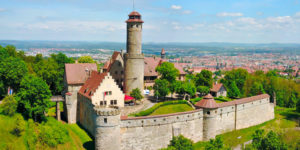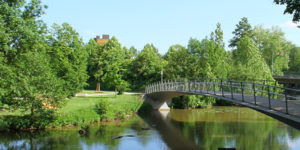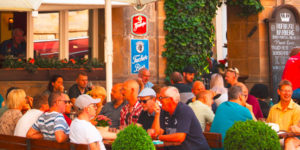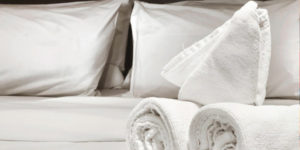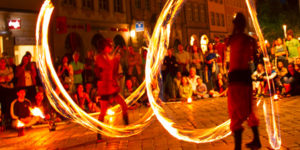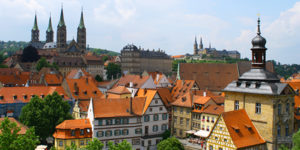A town hall in the middle of the river
Already in 1386, a town hall was mentioned in this exact position, which fell victim to a fire in 1460. The present building was built on exact the same site in 1461. The half-timbered building on the south side, the so-called Rottmeisterhaus, has been preserved in its original form until today.
The legend explains the unusual site with the bishop’s refusal to provide the citizens with a place inside the bishopric to built the Town Hall they demanded. However, it seems more plausible that the self-confident citizens decided to build the town hall on the border between their insular city and the episcopal town on the hill, right in the middle of the Regnitz, to show their recently acquired power. Upstream, the view is directed to the former mill district. There used to be grain mills, paper mills and tills, today you can find student residences and hotels there. Looking from the bridges downstream, you can see the scenery of “Little Venice”, with its romantic fishermen´s houses.
The Baroque masterpiece
In the middle of the river rises a spectacular town hall tower, which was built on behalf of Prince Bishop Friedrich Karl von Schönborn (1729-1746). The construction was directed by the famous master builder Balthasar Neumann. The town hall tower was decorated in Baroque style with a magnificent dome. After 1750, sculptor Joseph Bonaventura Mutschele added further ornate and playful elements, such as the balcony and the coats of arms. On the municipal coat of arms facing the cathedral, St. George can be recognized as a knight.
On the adjoining façade you can find an impressive illusion painting in baroque style, commissioned by Prince Bishop Philipp Anton von Frankenstein before his death in 1753. Frankenstein’s successor, Konrad von Stadion, completed the Baroque renovation and had his own coat of arms affixed. His entrance to Bamberg can be admired in a fresco on the adjacent wall. Finally, in 1750, Johann Anwander succeeded in giving the work a stereoscopic effect, inserting three-dimensional elements and shadows. The attentive observer can recognize in the painting the drawing of an angel whose leg comes out from the wall surface. Until this time, such stylistic devices were only used indoors.

